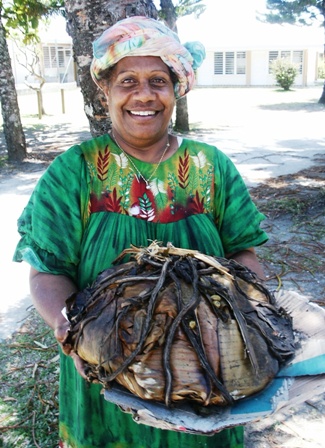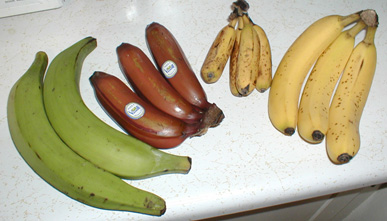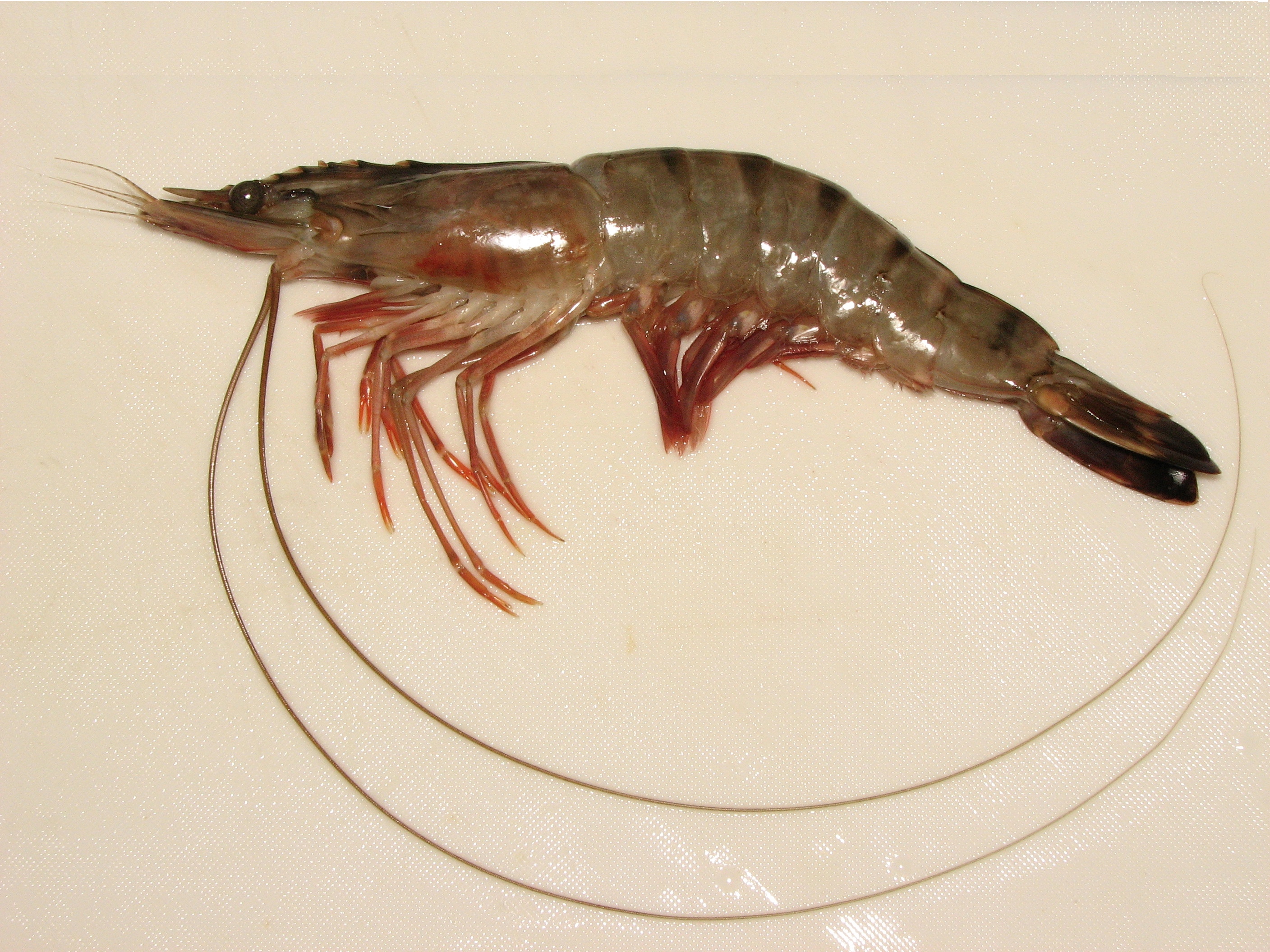|
Bougna
Bougna is a traditional feast dish of the Kanak people of New Caledonia. The word "bougna" comes from the Drehu word "puhnya" meaning "bundle", "pack". Bougna often contains taro, yam, sweet potato, banana, and pieces of either chicken, fish, crab, prawns or lobster. The contents are wrapped in banana leaves The banana leaf is the leaf of the banana plant, which may produce up to 40 leaves in a growing cycle. The leaves have a wide range of applications because they are large, flexible, waterproof and decorative. They are used for cooking, wrappin ... and are then buried to cook in a ground oven, which uses red-hot rocks heated by fire. After about two hours of cooking, the banana leaves are unearthed and unwrapped, and the contents are eaten. References New Caledonian cuisine Earth oven {{NewCaledonia-stub ... [...More Info...] [...Related Items...] OR: [Wikipedia] [Google] [Baidu] |
Kanak People
The Kanak (French spelling until 1984: Canaque) are the indigenous Melanesian inhabitants of New Caledonia, an overseas collectivity of France in the southwest Pacific. According to the 2019 census, the Kanak make up 41.2% of New Caledonia's total population — corresponding to around 112,000 people. The Kanak population is traditionally contrasted with two other groups of European descent: (1) the Caldoche, who were born in New Caledonia; and (2) the Zoreille, who live in the territory yet were born in metropolitan France. The earliest traces of human settlement in New Caledonia go back to Lapita culture, about 3000 BP, i.e. 1000 BCE. In addition, Polynesian seafarers have intermarried with the Kanaks over the last centuries. New Caledonia was annexed to France in 1853, and became an overseas territory of France in 1956. An independence movement, which led to a failed revolt in 1967, was restarted in 1984, pursuing total independence from French rule. When the ... [...More Info...] [...Related Items...] OR: [Wikipedia] [Google] [Baidu] |
New Caledonia
) , anthem = "" , image_map = New Caledonia on the globe (small islands magnified) (Polynesia centered).svg , map_alt = Location of New Caledonia , map_caption = Location of New Caledonia , mapsize = 290px , subdivision_type = Sovereign state , subdivision_name = , established_title = Annexed by France , established_date = 24 September 1853 , established_title2 = Overseas territory , established_date2 = 1946 , established_title3 = Nouméa Accord , established_date3 = 5 May 1998 , official_languages = French , regional_languages = , capital = Nouméa , coordinates = , largest_city = capital , demonym = New Caledonian , government_type = Devolved parliamentary dependency , leader_title1 = President of France , leader_name1 = Emmanuel Macron , leader_title2 = President of the Government , leader_name2 = Louis Mapou , leader_title3 = President of the Congress , leader_name3 = Roch Wamytan , leader_title4 = High Commissioner , leader_name4 = ... [...More Info...] [...Related Items...] OR: [Wikipedia] [Google] [Baidu] |
Femme Kanak
''Femme'' (; , literally meaning "woman") is a term traditionally used to describe a lesbian who exhibits a feminine identity or gender presentation. Alternate meanings of the word also exist with some non-lesbian individuals using the word, notably some gay men, bisexuals, nonbinary and transgender individuals. Heavily associated with lesbian history and culture, ''femme'' has been used among lesbians to distinguish traditionally feminine lesbians from their butch (i.e. masculine) lesbian counterparts and partners. Derived from American lesbian communities following World War II when women joined the work force, the identity became a characteristic of the working class lesbian bar culture of the 1940s–1950s. By the 1990s, the term ''femme'' had additionally been adopted by bisexual women. It has however also been argued by bi+ and other queer activists that since the term bisexual is relatively newer than lesbian, bisexual women historically formed part of the lesbian co ... [...More Info...] [...Related Items...] OR: [Wikipedia] [Google] [Baidu] |
Drehu
Drehu (; also known as Dehu, Lifou, Lifu, qene drehu) is an Austronesian language mostly spoken on Lifou Island, Loyalty Islands, New Caledonia. It has about twelve-thousand fluent speakers and the status of a French regional language. This status means that pupils can take it as an optional topic for the baccalauréat in New Caledonia itself or French mainland. It has been also taught at the Institut national des langues et civilisations orientales (INALCO) in Paris since 1973 and at thUniversity of New Caledonia since 2000. As for other Kanak languages, Drehu is now regulated by the " Académie des langues kanak", officially founded in 2007. There is also a respectful register in Drehu, called ''qene miny''. In time past, this was used to speak to the chiefs (joxu). Today very few people still know and practice this language. Phonology Vowels is heard as before nasals. can sometimes be before nasals. Consonants Writing system Drehu was first written in the La ... [...More Info...] [...Related Items...] OR: [Wikipedia] [Google] [Baidu] |
Taro
Taro () (''Colocasia esculenta)'' is a root vegetable. It is the most widely cultivated species of several plants in the family Araceae that are used as vegetables for their corms, leaves, and petioles. Taro corms are a food staple in African, Oceanic, and South Asian cultures (similar to yams). Taro is believed to be one of the earliest cultivated plants. Names and etymology The English term '' taro'' was borrowed from the Māori language when Captain Cook first observed ''Colocasia'' plantations there in 1769. The form ''taro'' or ''talo'' is widespread among Polynesian languages:*''talo'': taro (''Colocasia esculenta'') – entry in the ''Polynesian Lexicon Project Online'' (Pollex). in Tahitian; ... [...More Info...] [...Related Items...] OR: [Wikipedia] [Google] [Baidu] |
Yam (vegetable)
Yam is the common name for some plant species in the genus ''Dioscorea'' (family Dioscoreaceae) that form edible tubers. Yams are perennial herbaceous vines cultivated for the consumption of their starchy tubers in many temperate and tropical regions, especially in West Africa, South America and the Caribbean, Asia, and Oceania. The tubers themselves, also called "yams", come in a variety of forms owing to numerous cultivars and related species. Yams were independently domesticated on three different continents: Africa ('' Dioscorea rotundata''), Asia ('' Dioscorea alata''), and the Americas ('' Dioscorea trifida''). Etymology The name "yam" appears to derive from Portuguese ''inhame'' or Canarian (Spain) ''ñame'', which derived from West African languages during trade. However in both languages, this name commonly refers to the taro plant (''Colocasia esculenta'') from the genus '' Colocasia'', as opposed to ''Dioscorea''. The main derivations borrow from verb ... [...More Info...] [...Related Items...] OR: [Wikipedia] [Google] [Baidu] |
Sweet Potato
The sweet potato or sweetpotato ('' Ipomoea batatas'') is a dicotyledonous plant that belongs to the bindweed or morning glory family, Convolvulaceae. Its large, starchy, sweet-tasting tuberous roots are used as a root vegetable. The young shoots and leaves are sometimes eaten as greens. Cultivars of the sweet potato have been bred to bear tubers with flesh and skin of various colors. Sweet potato is only distantly related to the common potato (''Solanum tuberosum''), both being in the order Solanales. Although darker sweet potatoes are often referred to as "yams" in parts of North America, the species is not a true yam, which are monocots in the order Dioscoreales. Sweet potato is native to the tropical regions of the Americas. Of the approximately 50 genera and more than 1,000 species of Convolvulaceae, ''I. batatas'' is the only crop plant of major importance—some others are used locally (e.g., ''I. aquatica'' "kangkong"), but many are poisonous. The genus ''Ipomo ... [...More Info...] [...Related Items...] OR: [Wikipedia] [Google] [Baidu] |
Banana
A banana is an elongated, edible fruit – botanically a berry (botany), berry – produced by several kinds of large herbaceous flowering plants in the genus ''Musa (genus), Musa''. In some countries, Cooking banana, bananas used for cooking may be called "plantains", distinguishing them from dessert bananas. The fruit is variable in size, color, and firmness, but is usually elongated and curved, with soft flesh rich in starch covered with a rind, which may be green, yellow, red, purple, or brown when ripe. The fruits grow upward in clusters near the top of the plant. Almost all modern edible seedless (Parthenocarpy, parthenocarp) bananas come from two wild species – ''Musa acuminata'' and ''Musa balbisiana''. The Binomial nomenclature, scientific names of most cultivated bananas are ''Musa acuminata'', ''Musa balbisiana'', and Musa × paradisiaca, ''Musa'' × ''paradisiaca'' for the hybrid ''Musa acuminata'' × ''M. balbisiana'', depending on their genome, ... [...More Info...] [...Related Items...] OR: [Wikipedia] [Google] [Baidu] |
Chicken
The chicken (''Gallus gallus domesticus'') is a domestication, domesticated junglefowl species, with attributes of wild species such as the grey junglefowl, grey and the Ceylon junglefowl that are originally from Southeastern Asia. Rooster or cock is a term for an adult male bird, and a younger male may be called a cockerel. A male that has been castrated is a capon. An adult female bird is called a hen and a sexually immature female is called a pullet. Humans now keep chickens primarily as a source of food (consuming both their Chicken as food, meat and egg as food, eggs) and as pets. Traditionally they were also bred for cockfighting, which is still practiced in some places. Chickens are one of the most common and widespread domestic animals, with a total population of 23.7 billion , up from more than 19 billion in 2011. There are more chickens in the world than any other bird. There are numerous cultural references to chickens – in myth, folklore and religion, and in la ... [...More Info...] [...Related Items...] OR: [Wikipedia] [Google] [Baidu] |
Fish
Fish are aquatic, craniate, gill-bearing animals that lack limbs with digits. Included in this definition are the living hagfish, lampreys, and cartilaginous and bony fish as well as various extinct related groups. Approximately 95% of living fish species are ray-finned fish, belonging to the class Actinopterygii, with around 99% of those being teleosts. The earliest organisms that can be classified as fish were soft-bodied chordates that first appeared during the Cambrian period. Although they lacked a true spine, they possessed notochords which allowed them to be more agile than their invertebrate counterparts. Fish would continue to evolve through the Paleozoic era, diversifying into a wide variety of forms. Many fish of the Paleozoic developed external armor that protected them from predators. The first fish with jaws appeared in the Silurian period, after which many (such as sharks) became formidable marine predators rather than just the prey of arthrop ... [...More Info...] [...Related Items...] OR: [Wikipedia] [Google] [Baidu] |
Crab
Crabs are decapod crustaceans of the infraorder Brachyura, which typically have a very short projecting " tail" ( abdomen) ( el, βραχύς , translit=brachys = short, / = tail), usually hidden entirely under the thorax. They live in all the world's oceans, in freshwater, and on land, are generally covered with a thick exoskeleton, and have a single pair of pincers. They first appeared during the Jurassic Period. Description Crabs are generally covered with a thick exoskeleton, composed primarily of highly mineralized chitin, and armed with a pair of chelae (claws). Crabs vary in size from the pea crab, a few millimeters wide, to the Japanese spider crab, with a leg span up to . Several other groups of crustaceans with similar appearances – such as king crabs and porcelain crabs – are not true crabs, but have evolved features similar to true crabs through a process known as carcinisation. Environment Crabs are found in all of the world's oceans, as well as i ... [...More Info...] [...Related Items...] OR: [Wikipedia] [Google] [Baidu] |
Prawns
Prawn is a common name for small aquatic crustaceans with an exoskeleton and ten legs (which is a member of the order decapoda), some of which can be eaten. The term "prawn"Mortenson, Philip B (2010''This is not a weasel: a close look at nature's most confusing terms''Pages 106–109, John Wiley & Sons. . is used particularly in the United Kingdom, Ireland, and Commonwealth nations, for large swimming crustaceans or shrimp, especially those with commercial significance in the fishing industry. Shrimp that are present in this category often belong to the suborder Dendrobranchiata. In North America, the term is used less frequently, typically for freshwater shrimp. The terms shrimp and prawn themselves lack scientific standing. Over the years, the way they are used has changed, and in contemporary usage the terms are almost interchangeable. Shrimp'' vs. ''prawn Regional distinctions The terms shrimp and prawn originated in Britain. In the use of common names for species, shrimp ... [...More Info...] [...Related Items...] OR: [Wikipedia] [Google] [Baidu] |








.jpg)
